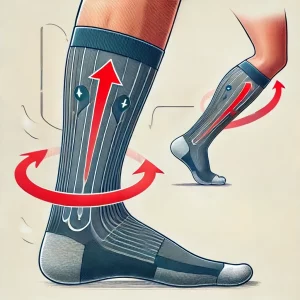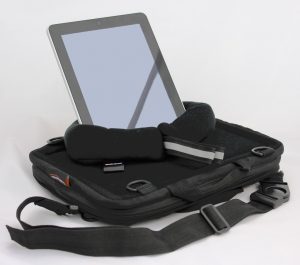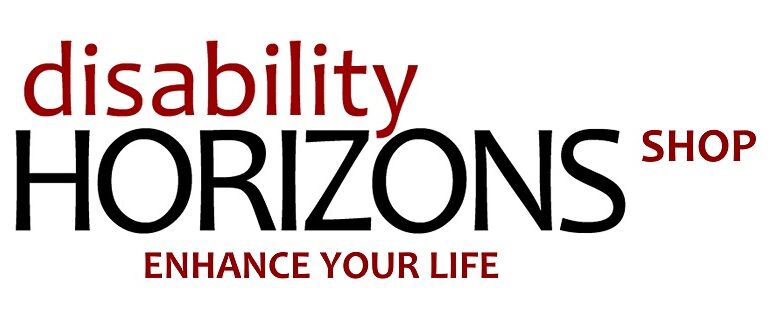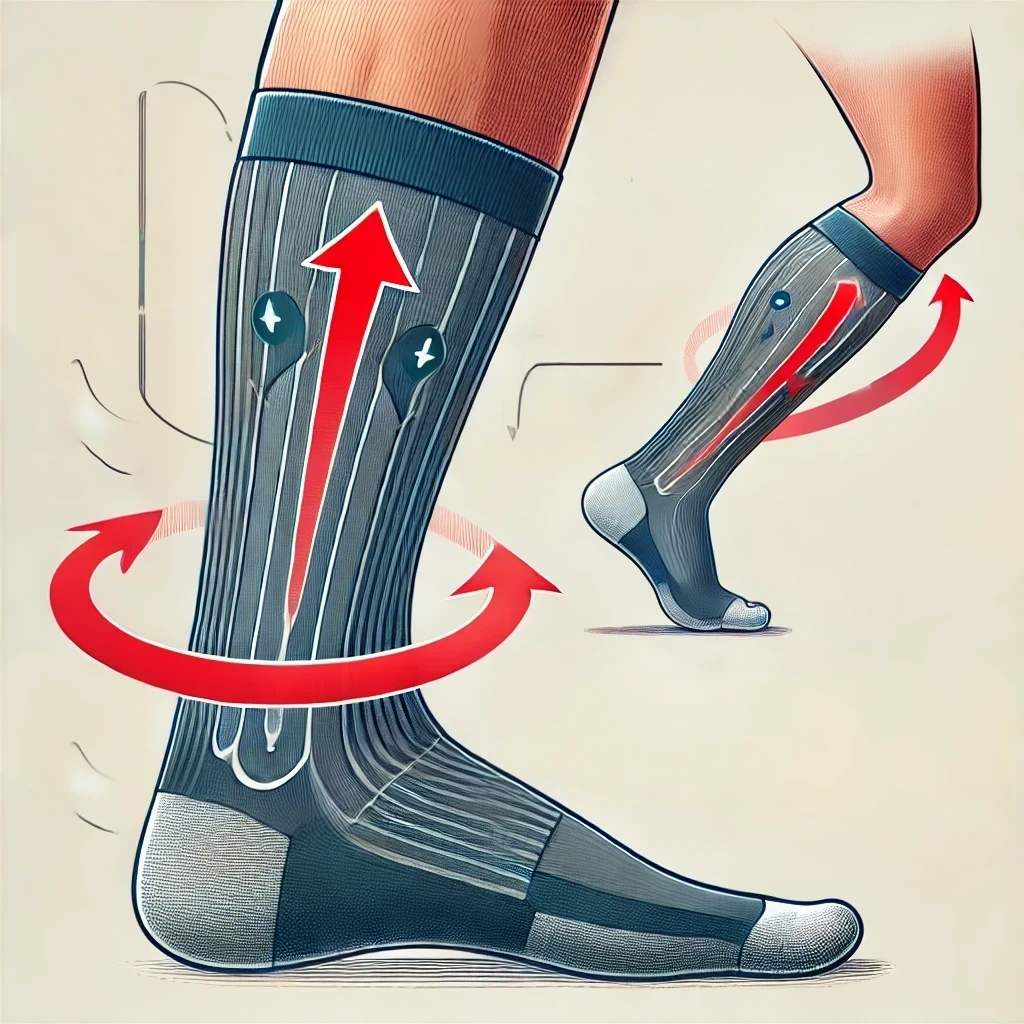Compression Socks for Travel: Essential Gear for Disabled People
Travelling can be particularly challenging for disabled people, often resulting in discomfort, swelling, and increased health risks. Compression socks offer a practical solution to these issues, providing essential support and enhancing blood circulation.
These specially designed socks can help prevent conditions like deep vein thrombosis (DVT), alleviate varicose vein pain, and reduce swelling, making travel more comfortable and safer. In this article, we’ll explore the benefits of compression socks for disabled travellers and provide tips on choosing the right pair for your needs.
Key Takeaways Table
| Key Points | Details |
|---|---|
| Benefits of Compression Socks | Increase blood flow, reduce blood clot risk, alleviate symptoms of circulatory conditions, aid post-surgical recovery, enhance athletic performance and recovery. |
| Types of Compression Socks | Graduated, Non-medical, Anti-embolism. |
| Compression Levels | Low (less than 20 mmHg), Medium (20-30 mmHg), Moderate (30+ mmHg). |
| Styles of Compression Socks | Knee-high, Thigh-high, Full-length. |
| Potential Risks and Contraindications | Skin irritation, improper fit issues, not suitable for individuals with PAD, severe neuropathy, congestive heart failure. |
| Other Travel Gear for Disabled People | Trabasack travel bags, comfortable shoes, medical awareness cards & water bottles with tubes. |
| Travel Tips | Ensure proper fit of compression socks, consider other travel aids to enhance safety and comfort. |
What Are Compression Socks?
Compression socks or stockings are foot and leg coverings that squeeze or compress the legs. They can be helpful when travelling to increase blood flow and lower the risk of blood clots.
Travelling can take its toll, and sitting for long periods can lead to swollen, achy legs and feet for everyone, including people with disabilities. For men, investing in high-quality men’s compression socks designed with the required compression level can help improve circulation and reduce discomfort. For women, stockings or tights can provide similar benefits, along with choosing comfortable footwear that offers good support and cushioning. Additionally, both men and women should take breaks to stretch and walk around when possible, stay hydrated to reduce the risk of blood clots, and perform simple leg exercises, such as ankle circles or calf raises, to keep the blood flowing.
Why Use Compression Socks for Travel?
 If you’re at higher risk for blood clots or have poor circulation due to your disability, compression socks are the answer. They are essential gear for travel because you’re sitting in one place for an extended period, and prolonged sitting affects blood flow and increases the risk of a blood clot.
If you’re at higher risk for blood clots or have poor circulation due to your disability, compression socks are the answer. They are essential gear for travel because you’re sitting in one place for an extended period, and prolonged sitting affects blood flow and increases the risk of a blood clot.
Recent studies conducted by the American Heart Association (AHA) concluded that wearing compression socks reduced the risks of symptoms from DVT while travelling on a long flight. Wearing compression stockings for flights of more than four hours can significantly reduce the risks of DVT and leg swelling (edema).
Another way that compression socks work is by diminishing the appearance of varicose veins in the legs. They may be helpful to relieve the pain, discomfort, and swelling in your legs caused by your varicose veins.
Types of Compression Socks
Compression socks come in varying compression levels, and getting the correct grade for your needs may require a doctor’s prescription. Compression stockings, socks, and sleeves are all designed to improve circulation, so there are many types to choose from.
- Graduated compression socks are medical and put the most pressure on the ankle area. The pressure slowly decreases going up the leg to encourage more blood flow back toward the heart. Medical-grade compression socks are rated by their amount of pressure as measured in millimeters of mercury (mmHg).
| Compression Level | mmHg | Recommendation |
| Low compression | Less than 20 mmHg | Recommended for people who want extra support but don’t have specific medical concerns |
| Medium compression | Between 20 and 30 mmHg | Recommended for people with varicose veins |
| Moderate compression | 30 mmHg or greater | Recommended for people with frequent leg pain and swelling |
- Non-medical compression socks, like those you might buy at a store, have the same amount of pressure throughout the sock. These are affordable and can help people with disabilities who suffer from tired, achy legs while travelling but cannot get a prescription.
- Anti-embolism stockings or socks are similar to nonmedical in that they provide the same amount of compression throughout. However, it is less pressure than graduated socks, and these socks or stockings are geared more toward those with disabilities who aren’t mobile or have minimal mobility, such as after a recent surgery.
Compression can come in socks, stockings, or sleeves. Here’s a quick breakdown of each type:
- Compression Socks start working from your feet to help prevent blood from stagnating in that area, which could cause swelling, inflammation, or discomfort.
- Compression Stockings exert some pressure on the feet but are more effective when the pressure moves up the leg—you can get full stockings, knee-high stockings, or thigh-high stockings.
- Compression sleeves are focused more on the pressure in the calf muscles to give you extra support and are often utilized more by athletes or those who work out to help improve blood flow during exercise.
Benefits of Compression Socks for Travel
Wearing compression socks during travel has many benefits for those with disabilities. Your calf muscles function to send blood from the bottom half of your body back up through your circulatory system and reach your heart. Circulation isn’t efficient when these muscles aren’t constricting correctly because you’re sitting or lying for an extended period. Here are some detailed medical advantages of wearing compression socks:
1. Prevention of Deep Vein Thrombosis (DVT)
Deep vein thrombosis (DVT) is a condition where blood clots form in the deep veins, typically in the legs. These clots can be dangerous if they travel to the lungs, causing a pulmonary embolism.
Compression socks help prevent DVT by applying graduated pressure to the legs, which promotes blood flow back to the heart and reduces the likelihood of blood pooling and clot formation. This is especially crucial during long flights or periods of prolonged inactivity, where the risk of DVT is higher.
The American College of Chest Physicians (ACCP) recommends the use of graduated compression stockings for long-distance travellers who are at an increased risk of DVT. This includes individuals with a history of DVT, those who have undergone recent surgery, pregnant women, and those with certain genetic clotting disorders.
2. Reduction of Blood Clot Risk
Compression socks are also beneficial in reducing the overall risk of blood clots if you are prone to them during travels or long flights. By enhancing venous return, they help maintain proper blood flow and prevent stagnation, which is a key factor in clot formation. This makes them a valuable tool for people who are bedridden, recovering from surgery, or have conditions that predispose them to clotting issues.
3. Alleviation of Symptoms in Circulatory Conditions
Compression socks can provide significant symptom relief for individuals with various circulatory conditions. These conditions include:
- Chronic Venous Insufficiency (CVI): This occurs when the veins in the legs cannot efficiently return blood to the heart, leading to swelling, pain, and varicose veins. Compression socks improve venous return and alleviate these symptoms.
- Varicose Veins: By applying pressure to the legs, compression socks reduce the diameter of distended veins and enhance blood flow, thereby minimising the discomfort and visibility of varicose veins.
Editors tip:
While compression socks can manage mild to moderate varicose veins, those with severe symptoms or long term discomfort should look for a vein specialist.Look for a reputable clinic in your area, such as Texas Vein Experts, that offers minimally invasive, pain-free treatments for venous conditions like varicose veins, leg pain, swelling, and heaviness. If compression socks aren’t enough, a consultation can help you understand whether medical treatment might improve your comfort and mobility — especially if symptoms are limiting your daily life or travel plans
- Edema: Compression socks are effective in managing edema (swelling) caused by fluid retention in the lower extremities. They help reduce swelling by promoting the movement of lymphatic fluid and preventing fluid accumulation.
4. Support for Post-Surgical Recovery
After surgeries, particularly those involving the legs or abdomen, there is an increased risk of blood clots due to reduced mobility.
Compression socks are often prescribed to support recovery by maintaining proper blood flow and reducing the risk of postoperative DVT and other complications.
5. Enhanced Athletic Performance and Recovery
Athletes use compression socks not only to prevent injuries but also to enhance performance and speed up recovery. The socks help reduce muscle vibration during physical activity, which can decrease muscle fatigue and soreness.
Additionally, the improved circulation aids in faster removal of metabolic waste products from the muscles, facilitating quicker recovery after strenuous exercise.
Finding the Right Compression Socks for Travel
Compression socks can be used for medical and cosmetic purposes, and the appropriate compression level depends on the intended use. Here is a detailed breakdown of the different compression levels and when each is most appropriate:
1. Mild Compression (8-15 mmHg)
Best for:
- General Wellness and Everyday Use: Mild compression socks are suitable for individuals looking to improve overall leg health, especially those who spend a lot of time on their feet or sitting for extended periods.
- Mild Swelling and Fatigue: These socks can help reduce mild leg swelling and fatigue by promoting gentle blood flow.
- Preventing Varicose Veins: For those who are at the early stages of developing varicose veins or have a family history of vein issues, mild compression can help prevent the progression of these conditions.
Typical users:
- Office workers
- Travellers on short flights
- Pregnant women with mild swelling
2. Moderate Compression (15-20 mmHg)
Best for:
- Mild to Moderate Varicose Veins: Moderate compression is effective for managing mild to moderate varicose veins, reducing symptoms such as aching and swelling.
- Preventing DVT During Travel: These socks are recommended for individuals travelling on long flights or sitting for prolonged periods, as they help prevent deep vein thrombosis.
- Post-Surgical Recovery: After minor surgeries, moderate compression can support recovery by improving blood flow and reducing the risk of blood clots.
- Mild Edema: Moderate compression helps manage mild to moderate swelling in the legs.
Typical users:
- Frequent travellers
- Individuals with a history of varicose veins
- Post-surgery patients with doctor’s recommendations
3. Firm Compression (20-30 mmHg)
Best for:
- Moderate to Severe Varicose Veins: Firm compression provides significant support for individuals with more pronounced varicose veins, alleviating discomfort and preventing further vein damage.
- Chronic Venous Insufficiency (CVI): Those with CVI benefit from firm compression as it helps the veins return blood to the heart more effectively, reducing symptoms such as swelling and pain.
- Moderate Edema: Firm compression is suitable for managing moderate to severe swelling, including edema caused by various medical conditions.
- Preventing DVT: These socks are often prescribed to individuals at a higher risk of developing deep vein thrombosis, especially after surgeries or during long-term immobility.
Typical users:
- People with moderate to severe varicose veins
- Individuals with chronic venous insufficiency
- Post-surgery patients with a high risk of DVT
4. Extra-Firm Compression (30-40 mmHg and above)
Best for:
- Severe Varicose Veins and CVI: Extra-firm compression is used for managing severe cases of varicose veins and chronic venous insufficiency, providing substantial support to prevent vein-related complications.
- Severe Edema and Lymphedema: These socks are essential for individuals with severe swelling, including those with lymphedema, to reduce fluid retention and manage symptoms effectively.
- Post-Thrombotic Syndrome: Extra-firm compression can help alleviate symptoms of post-thrombotic syndrome, a condition that can occur after deep vein thrombosis.
Typical users:
- Patients with severe varicose veins or CVI
- Individuals with severe edema or lymphedema
- Those with post-thrombotic syndrome
Styles of Compression Socks
Compression socks come in various styles to suit different needs and preferences. Here’s an overview of the most common styles, their benefits, and appropriate use cases:
1. Knee-High Compression Socks
Description: Knee-high com pression socks extend from the foot up to just below the knee. They are the most commonly used type of compression socks.
pression socks extend from the foot up to just below the knee. They are the most commonly used type of compression socks.
Benefits:
- Ease of Use: Easier to put on and take off compared to thigh-high or full-length options.
- Effective for Lower Leg Issues: Ideal for managing conditions that affect the lower legs, such as varicose veins, mild to moderate oedema, and preventing DVT.
- Comfortable for Daily Wear: Suitable for everyday activities, including work and travel.
Use Cases:
- Office workers and travellers
- Individuals with mild to moderate varicose veins or swelling
- Athletes looking for muscle support and recovery
2. Thigh-High Compression Socks
Description: Thigh-high compression socks extend from the foot to the upper thigh. They provide a greater area of compression than knee-high socks.
Benefits:
- Extended Coverage: Provide support to the entire leg, which can be beneficial for conditions that affect both the lower and upper legs.
- Preventing and Managing Severe Conditions: More effective for severe varicose veins, extensive swelling, and post-surgical recovery.
- Enhanced Circulation: Improve overall blood flow in the legs, reducing the risk of DVT.
Use Cases:
- Individuals with severe varicose veins or extensive swelling
- Post-surgical patients needing extended leg support
- Those at high risk of DVT
3. Full-Length or Pantyhose Compression Socks
Full-length compression socks, also known as compression pantyhose, cover from the foot up to the waist. They are designed to provide uniform compression across the entire leg.
Benefits:
- Full Leg and Lower Abdomen Support: Offers comprehensive support for the legs and lower abdomen, which can be beneficial for certain medical conditions.
- Even Compression: Provide consistent compression from the foot to the waist, improving overall blood circulation and reducing the risk of clot formation.
- Suitable for Severe Conditions: Ideal for managing severe circulatory issues, such as chronic venous insufficiency, lymphedema, and preventing post-thrombotic syndrome.
Use Cases:
- Individuals with severe circulatory conditions
- Those with lymphedema or chronic venous insufficiency
- Post-thrombotic syndrome patients
Potential Risks and Contraindications
While compression socks are beneficial for many, they are not suitable for everyone. Here are some potential risks and contraindications:
Potential Risks:
-
- Some individuals may experience skin irritation, redness, or itching from wearing compression socks.
- Improperly fitted compression socks can cause discomfort, pinching, or excessive pressure, leading to numbness or tingling.
- If the compression level is too high or the socks are too tight, they can impair blood flow rather than improve it.
Contraindications:
- Individuals with PAD should avoid compression socks as they can further restrict blood flow to the legs.
- People with severe peripheral neuropathy may not feel if the socks are too tight, which can lead to skin damage.
- Patients with congestive heart failure should consult a healthcare provider before using compression socks, as the added pressure can affect fluid balance.
- Compression socks should not be used over infected areas or open wounds as they can exacerbate the condition.
How to Put on Compression Socks More Easily
Compression socks can be difficult to put on, especially for people with limited mobility, arthritis, or hand impairments.
Here are some practical tricks and tools to help:
- Use Talcum Powder or Lotion: Applying a small amount of talcum powder or a non-greasy lotion to your feet and legs can help the socks slide on more smoothly.
- Wear Rubber Gloves: Wearing rubber or textured gloves gives you a better grip on the fabric, making it easier to pull the socks up without snagging or damaging them.
- Roll Down the Sock: Turn the sock inside out up to the heel, place your toes in, and then gradually unroll the sock up your leg. This reduces friction and makes it easier to position the sock correctly.
- Get Assistance: Don’t hesitate to ask a friend, family member, or caregiver for help if you’re struggling to put on your compression socks.
Helpful Aids for Putting on Compression Socks
If you find it particularly difficult to put on compression socks, there are some gadgets designed to make it easier:
- Buckingham Deluxe Sock Aid: This helps you to put on socks or stockings without bending, twisting, or stretching. Its extra-long straps and comfortable loop handles make it ideal for who struggle to bend or reach their toes.
- Shoe Helper Reacher Grabber Dressing Aid: This multi-purpose tool is mainly designed for shoes but can help with socks too. It helps you reach and pull on socks, shoes, and other clothing items, making dressing much easier.
Other Travel Gear for Disabled People
Fortunately, there is a wide array of accessible and affordable travel products that can significantly enhance the safety and ease of travel for disabled people and work well with your compression socks. Each disability is unique, and even individuals with the same condition may experience it differently.
 Trabasack Mini Connect: This innovative travel bag and wheelchair tray is a versatile accessory. It provides a sturdy, flat surface for working, eating, or playing, making it perfect for use on the go. Its compact and lightweight design includes straps for easy attachment to wheelchairs or for carrying as a bag. The velcro-receptive surface ensures your items stay secure.
Trabasack Mini Connect: This innovative travel bag and wheelchair tray is a versatile accessory. It provides a sturdy, flat surface for working, eating, or playing, making it perfect for use on the go. Its compact and lightweight design includes straps for easy attachment to wheelchairs or for carrying as a bag. The velcro-receptive surface ensures your items stay secure.
Blacknight Luxury Blackout Sleeping Mask: Ensuring good sleep while travelling is crucial. The Blacknight sleeping mask offers total darkness to aid REM sleep. Its fully adjustable design fits comfortably around the eyes and nose, preventing any pressure marks or discomfort. The included velour storage bag makes it easy to carry.
AbleStrap Wheelchair Leg Strap: Keeping your legs secure is important during travel, and the AbleStrap leg strap does just that. Available in padded or leatherette versions, it ensures your legs remain in place during manual or sling transfers, or while sitting. The adjustable velcro fastening allows for a custom fit, providing comfort and stability.
Friendly Shoes: Finding comfortable shoes that are easy to put on and take off is essential. Friendly Shoes offer a range of adaptive footwear that combines style and practicality. They feature zippers for easy access, supportive insoles, and slip-resistant soles, making them perfect for travel.
Hands-Free Hydrant Water Bottle: Staying hydrated is vital, and the Hydrant water bottle allows for hands-free drinking. Its ergonomic design includes a bite valve and a long flexible tube, which can be clipped to clothing or bedding. This ensures easy access to water without needing assistance, ideal for those with limited mobility.
Summary of Recommended Travel Aids
| Product | Key Features |
|---|---|
| Trabasack Mini Connect | Lightweight, sturdy surface, versatile attachment options, velcro-receptive tray surface. |
| Blacknight Sleeping Mask | Total darkness, adjustable fit, velour storage bag, prevents pressure marks. |
| AbleStrap Leg Strap | Secure leg positioning, adjustable velcro, available in padded and leatherette versions. |
| Friendly Shoes | Easy access with zippers, supportive insoles, slip-resistant soles. |
| Hydrant Water Bottle | Hands-free drinking, ergonomic design, bite valve, flexible tube, clips for easy attachment. |
Medical Awareness Cards
Some disabled people don’t have a visible disability, so having a form of identification with a card can be extremely helpful for those around you. Medical awareness cards offer a way for travellers to easily communicate their needs.
The sunflower is a symbol of hidden disabilities that can be useful when dealing with cognitive, auditory, sensory, and visual problems. Travelers may opt to wear a lanyard with sunflowers to let others know.
Frequently Asked Questions (FAQs) on Compression Socks for Travel
- How long can you wear compression socks?
If you are getting medical-grade compression socks, you can discuss the length of wear with your doctor, but most compression socks, stockings, or sleeves can be worn for the entirety of the day. As long as you’re comfortable, there are no concerns with wearing them for long periods.
- Are there people who shouldn’t wear compression socks?
Compression socks are practically for everyone; however, you shouldn’t wear them if you have any type of reaction to the socks or they feel too uncomfortable. It can be helpful to discuss with a healthcare professional the amount of pressure you should look for when investing in socks so that you don’t end up causing more problems.
- Where does the fluid go from swelling when wearing compression socks?
Legs can be swollen, so compression socks squeeze fluid out of the skin tissue to the top of your socks. Elevating your legs while weaning compression socks can help reduce further swelling.
- Can you walk around in compression socks?
Yes, wearing compression socks while walking is advantageous. Researchers have found that leg compression improves blood flow in the lower legs while you walk, which reduces the risk of swelling and discomfort.
- What can you expect when you wear compression socks for travel for the first time?
It’s helpful to think of your socks as shoes that need to be broken in. After wearing them for a while when practising, you may need to take a break to remove them. It takes time to adjust to wearing them, but they should also feel comfortable for extended periods after this adjustment time.


